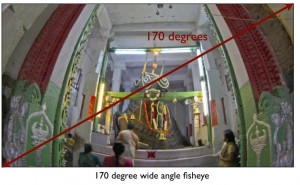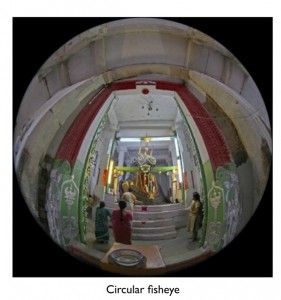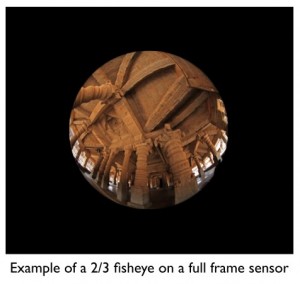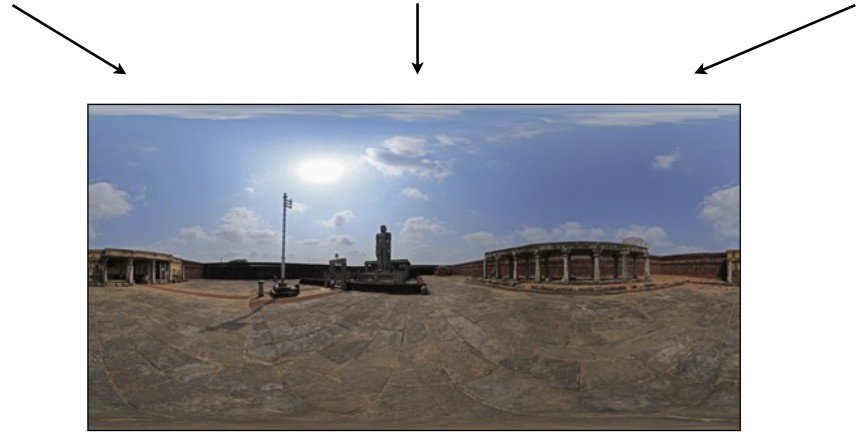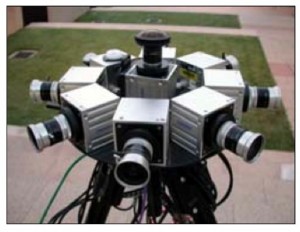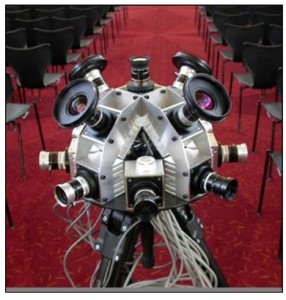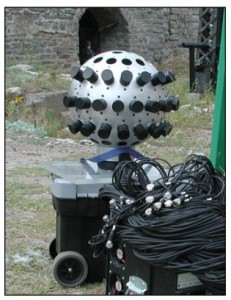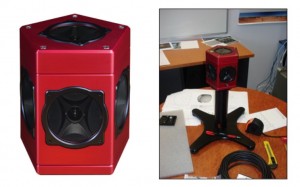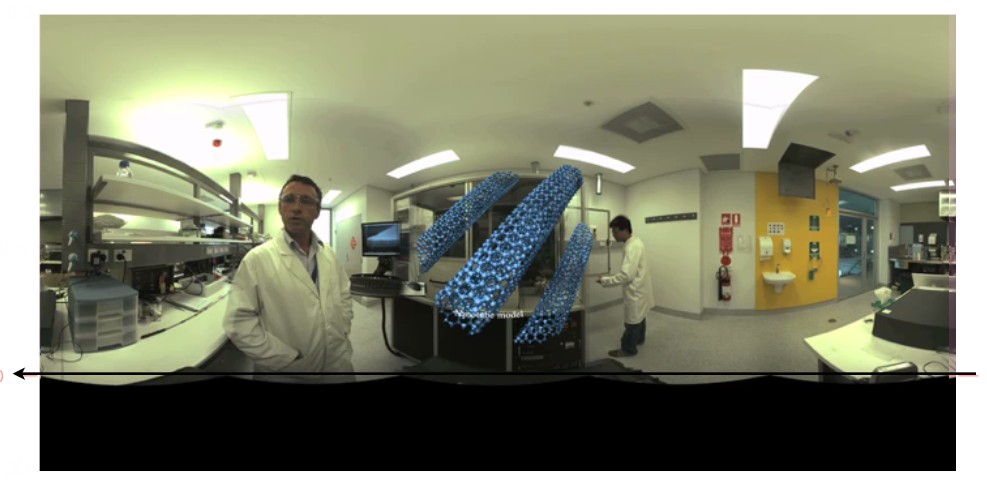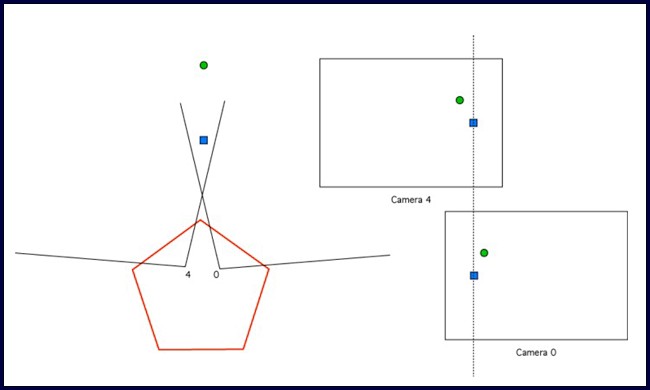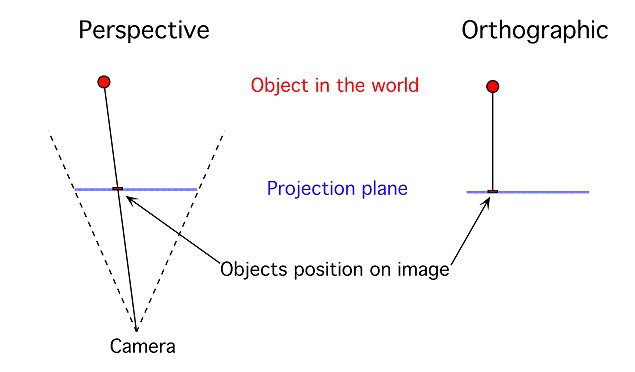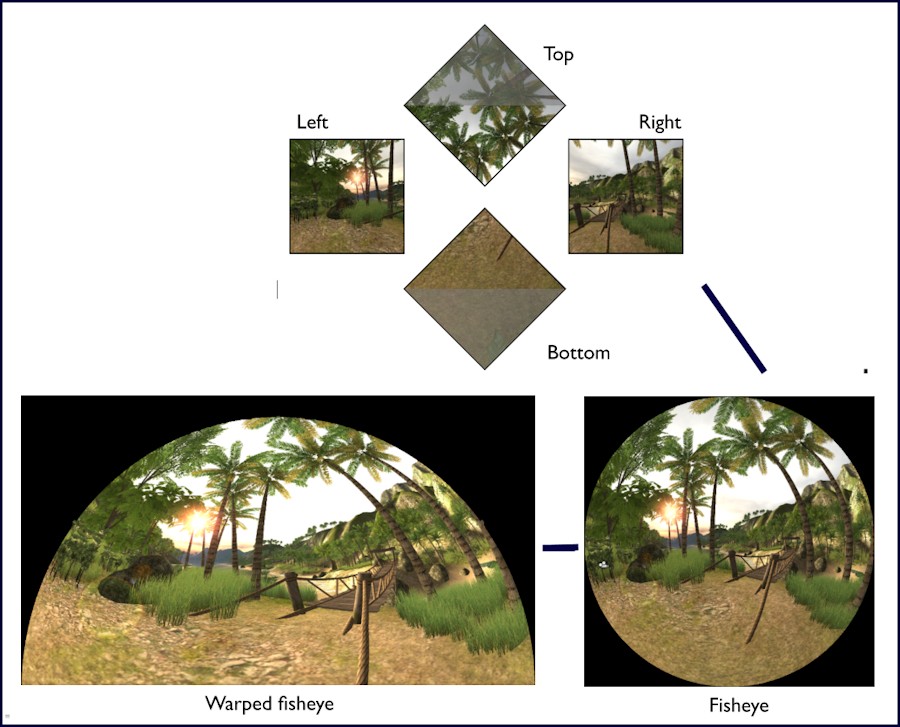Creating Content for Dome Projection
 |
 |
 |
 |
 |
 |
 |
 |
This section explains the various factors when creating content for dome projection: photography, film and real-time display.
Challenges
- Need to model in detail much more of the scene than needs to be done for a “normal” limited field of view perspective projection.
- The requirement to render very large frame sizes compared to more traditional media. The most common format for widely distributed content 4096×4096 pixel fisheye images is the standard.
- That is 8 times the number of pixels per frame compared to a HD (1920×1080) resolution animation.
- Access to render farm with your rendering engine of choice.
- Lack of easy preview options. Small domes and projection systems are rare and relatively expensive, time in many digital planetariums is valuable.
Photography
- Simplest way is a single (usually SLR) camera and fisheye lens.
- Distinction between wide angle fisheye lenses and circular fisheye lenses. For example a 170 degree wide angle fisheye is usually the angle between the diagonals.
- As with fisheye lenses on projectors, the main issue is detail and chromatic error towards the rim.
Photography: sensor size
- Consideration of how much of the sensor is being used or if the fisheye is truncated.
- Generally limited by the vertical resolution of the sensor.
- Sometimes truncation at the rear of the dome is acceptable.
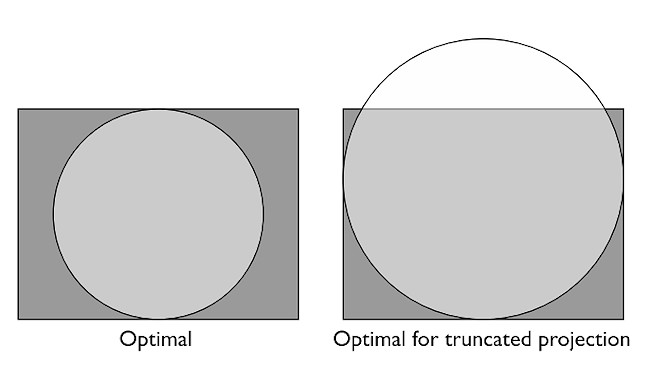
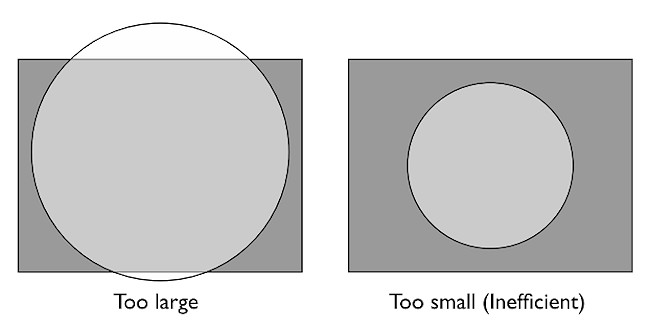
Photography: spherical projections

Same as cube maps earlier, any fisheye view can be created from on spherical image.
Filming
- Much more difficult to achieve sufficient resolution.
- 1K easy, 2K more difficult, higher resolution much more difficult.
- Note that resolution is not solely related to sensor resolution, video cameras apply lossy compression.
- Fisheye lens can be mounted on some video cameras but still difficult to find a high quality solution. Commodity video cameras and SLR cameras are generally 1080p which limits the diameter for a full fisheye. 4K video cameras may be interesting in the future.
- For some applications top truncated fisheye video can result in increased resolution, using
more of the sensor.
- Full fisheye vs partial fisheye, same issues as with fisheye projection: truncated or inscribed fisheye. Partial fisheye circles may be acceptable for domes with directional seating.
- Issues of lens quality, chromatic error and focus issues on the rim.
- Same issues with fisheye image and sensor size as discussed with still cameras.
Filming: multiple camera rigs
- Current solutions for high resolution fisheye are generally unwieldy.
- Require mains power and large hard disk arrays.
- Some people have experimented with multiple commodity cameras (eg: GoPro), or multiple SLR cameras. The multiple images are stitched together to form a single fisheye or spherical image. Not straightforward!
- 4K video cameras will give a 2K fisheye.
Filming: LadyBug
- Captures a full 360 degree field of view horizontally and about 145 degree field of view vertically. A partial spherical image.
- Capturing more than we need but it means we can choose the exact the exact fisheye view in post production. Same advantages as discussed for cubic maps for computer generated material.
- Resolution of the spherical projection is 5400 x 2700 pixels. Translates into fisheye images around 2300 pixels square. This does not take into account the video style compression artifacts that occur.
- Limited to 16fps. The earlier LadyBug-2 was 30fps but lower resolution.
Filming: LadyBug-3
Some blurring on the camera seams. For fundamental reasons (out side the scope of this discussion) it is impossible to have a perfect seam at all depths. It is possible to have a perfect seam at one particular depth.
Using the LadyBug-3 at full resolution in the field requires
- Power source, eg: car battery.
- Inverter to get AC from DC battery.
- External fast hard disk.
- Laptop.
Real-time and interactive
This is primarily aimed at movie content.
- While realtime APIs such as OpenGL and DirectX cannot create fisheye directly they can do so by either using the same cube map technique or using vertex shaders.
- Most planetarium suppliers have interactive applications for visualising astronomy data from the scale of planets up to the larger scales in the Universe.
- Perhaps the most popular small dome package with fisheye support is Stellarium (Open Source), also in a parallel development stream called Nightshade.
- Some engines (such as Unity and Quest3D) have a powerful enough scripting language to create the fisheye (approximation using a spherical reflective sphere).
Realtime: multi-pass textures
- The most straightforward approach and often the easiest to integrate into existing software.
- The scene is rendered 4 times and the resulting images, instead of being displayed, are mapped onto a mesh that creates a fisheye projection when rendered with an orthographic camera.
The contents of this page are contributed by Paul Bourke, Swinburne University, an top expert in this field.

